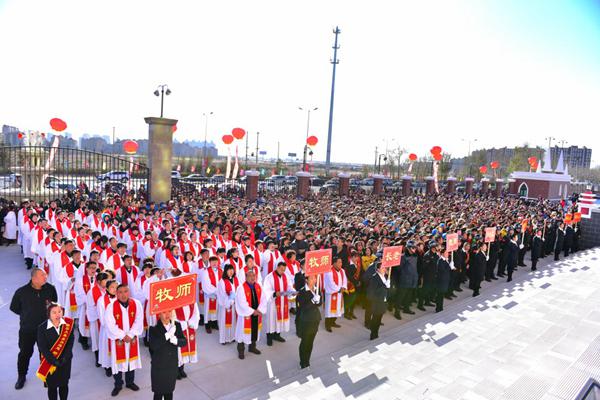Editor’s note: In the post-pandemic era, the pandemic control and the change in the environment have had a profound impact on Christian churches. Meanwhile, innovations and changes have taken place in varying degrees from the form to the quality of gatherings. Before the pandemic, church services were held in the buildings. However, in the last three years under the pandemic, the church had to change from large building gatherings to small group gatherings. For those churches that had already been doing small groups previously, the transformation can be carried out naturally, but for churches inexperienced in this way, the mode of small groups presents many problems. Both experienced and novice churches are faced with the real challenges brought by group gatherings.
Recently, the Christian Times, an online Chinese Christian newspaper, interviewed Pastor D from South China. D witnessed some problems that happened to himself, group leaders and believers during the transformation of his church to the small group mode.
From large building services to today’s small group mode, D talked about difficulties in the process.
The first is that generally, the Three-Self Church does not have much experience in this mode. In the process of the transformation, pastors and group leaders will find it difficult at many operational levels. It is like a person who has not worked as an accountant and is asked to do the job. It will be very difficult for him. Anything you do requires the accumulation of experience. Then, you can do it well.
The second is the selection of group leaders. Those who are enthusiastic in the church are not necessarily suitable for being group leaders. Perhaps they have been a leader of a certain ministry in a church. However, leading a small group requires much attention to detailed work such as building relationships with team members. If they are impatient, it will be difficult to lead the group well.
Third, the team leader is not well trained. They might have attended faith growth courses, but group leaders need to attend leadership courses. Even though they have received leadership training, it’s uneasy to implement what they’ve learned.
For instance, when the group leader announces to set up watch partners and a prayer group, the members react coldly and the group becomes helpless because believers do not know much about these issues. To build up a ministry, pastors will encounter many obstacles during the process of implementation. Believers should be prompted and see examples, only hearing about the thing is not enough for them to participate.
Implementation is very troublesome. In my city, people are busy with work and life, and they do not want to invest too much time and energy in their group. After participating in small group activities and praying for each other several times, group members think that’s all and a small group is nothing more. Therefore, many groups have a short life span. The group will be vibrant for a while, one or two years, and then get weaker and weaker, shrink gradually.
On the other hand, there is a pattern of boredom when people get along with each other for a long time. They pray for each other and for our country. They cannot pray deeply, so their relationship is quite superficial. Group members have not worked together in the ministry of the gospel and suffered together, so it is difficult for them to establish a deep relationship.
Group leaders should also have a high-quality fellowship among themselves. If group leaders are not very close, small group ministry would not succeed. Pastoral leaders should strengthen discipleship training. Group leaders are a group of people with the same heart, and each group cannot be too solidified.
“We used to do more than 10 groups. Sometimes, it’s very hard for leaders to lead. During such time, they have to make adjustments and reorganization. For example, a group leader works very hard for members, but members come and go frequently. The leader feels disappointed. At this time, the group needs to readjust. We need to merge the groups, add more leaders and they serve the group together. Previously, we had one person or one couple as a group leader to lead a group, now we have several people lead one group together and they can encourage each other,” D said.
He added, “Because of the pandemic, people’s mentality gets negative. As soon as believers stop gathering and start watching sermon videos at home, they get too lazy to move. The Web is too developed, which makes believers lazy. Everyone is not as enthusiastic as before. This is a problem. People are more and more aware of the importance of in-person gatherings. We pastors should take the lead and set examples for group leaders, otherwise, we cannot do the group well.”
Pastor D honestly reflected, “I myself am a negative example. At first, I assign a competent church staff to organize group leaders and do the preparatory work for the small group. Gradually, I get lazy and have less contact with group leaders. Although he worked hard and even beyond his ability, the result was not good. We thought the work was done, but the result was poor.”
“At that time, I examined myself. Besides teaching, I also need to serve group leaders well. I shouldn’t have let the assistant do the job for me. I need to give group leaders real care, support and teaching, and I should pay the price accordingly. Group leaders and pastors do not only have tasks to do but also need to have a close and trusting relationship in Christ.
- Translated by Charlie Li












